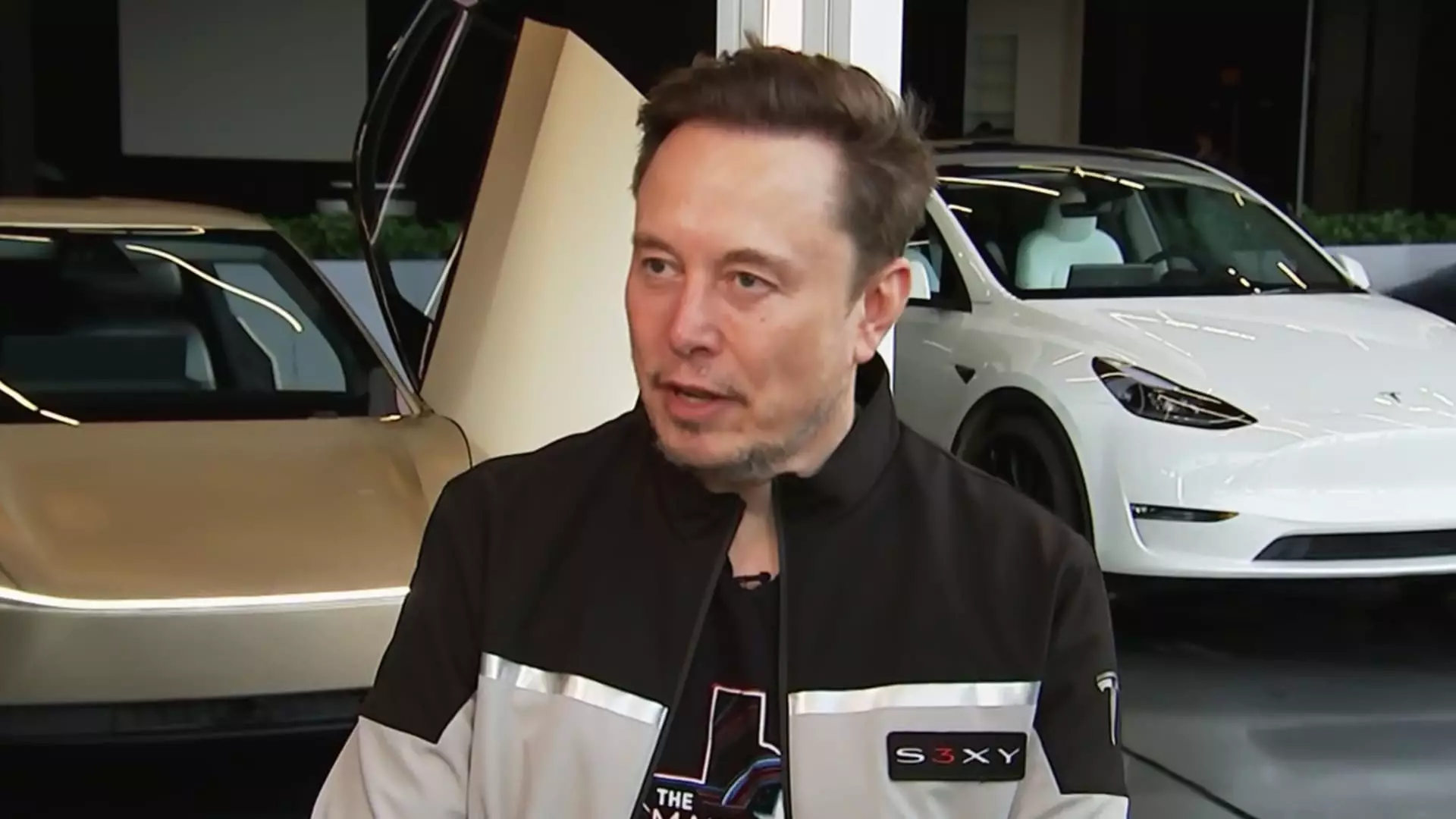Elon Musk, the audacious CEO of Tesla, has once again stirred enthusiasm in the realm of electric mobility with his recent declaration concerning the imminent deployment of robotaxis in Austin, Texas. This announcement is not just another iterative step in the evolution of transportation; it is a bullish assertion of Tesla’s ambition to revolutionize urban travel. In the minds of investors, enthusiasts, and skeptics alike, the countdown to June becomes a pivotal moment for Tesla, echoing Musk’s famed belief that humanity is on the cusp of a technological renaissance.
As Musk indicated during a compelling interview with CNBC, the initial phase will see around ten Model Y robotaxis deployed. This conservative start is intended to ensure the robustness of the technology before scaling up dramatically. But behind this cautious front lies a strategy rooted in the audacious aim to outperform competitors like Waymo, which has already established itself in the market with its own driverless ride-hailing services. Can Tesla’s promise of an uncrewed but monitored ride-hailing service become reality, or is it just another iteration of Musk’s classic optimism?
A Fresh Approach: Camera-Based Systems Over Traditional Sensors
One of the most striking aspects of Musk’s vision is Tesla’s unique strategy towards achieving full autonomy. While traditional players like Waymo lean heavily on an array of advanced sensors—lidar and radar—Tesla is banking on a simpler, more cost-effective solution centered on computer vision and neural networks. This philosophical divergence marks a significant risk, but should it succeed, it could redefine cost structures in the autonomous vehicle sector. Musk’s assertion that expensive sensors could stifle production may resonate within an industry hungry for scalable solutions.
The upcoming roll-out of FSD Unsupervised in Tesla’s robotaxis is a bet on the power of AI learning from extensive driving data. Yet, such a firm belief raises questions: can this shift in methodology genuinely compete against decades of data accumulated by rivals? Furthermore, will the reliance on a camera-centered strategy lead to vulnerabilities in varying environmental conditions, thus impacting safety and reliability? While Musk describes his approach as more generalized, the industry will be closely monitoring the results of this experiment.
Challenges Beyond Technology: The Corporate Image Dilemma
However, the road to revolution is rarely devoid of obstacles, and Tesla faces significant challenges that extend beyond the technological arena. The political landscape, characterized by Musk’s divisive involvement with governmental powers and its impact on brand perception, cannot be understated. Musk’s controversial moves have drawn ire from various factions, and this has translated into tangible impacts, including a reported 20% decline in automotive revenue in early 2025.
Such declines raise questions about consumer loyalty—do potential buyers really separate a company’s performance from the political affiliations or controversies surrounding its leaders? Musk insists that demand is rebounding, but the absence of supportive numbers leaves much to speculation. This disconnect between public perception and product desirability suggests a precarious balancing act ahead for Tesla. In a rapidly growing market, where consumer choices can pivot on a dime, maintaining a positive corporate image while navigating political waters might prove more challenging than the deployment of autonomous vehicles themselves.
The Road Ahead: A Pioneering Spirit or Overextending Ambition?
Despite these challenges, the excitement surrounding Tesla’s ambitious robotaxi plans reflects a broader societal optimism about the future of transportation. The notion that urban areas could eventually be served by fleets of autonomous vehicles presents tantalizing possibilities for alleviating congestion, reducing emissions, and reshaping city landscapes.
Elon Musk’s strategy aligns with his historical inclinations to challenge the status quo and leapfrog technological advancements, yet the launch must not only be technically sound but also socially accepted. The scrutiny of every decision, every safety concern, will be amplified as the world watches Tesla’s next moves closely.
Given that Musk has reaffirmed his commitment to Tesla for at least the next five years, it becomes essential for him to synergize the company’s image, drive technology advancements, and manage the socio-political dynamics that surround it. Tesla is at a crossroads where crossing the abyss of autonomous technology needs more than just bravado; it requires a delicate orchestration of innovation, public trust, and ethical responsibility. Will Musk’s robotaxi vision elevate Tesla to its long-anticipated heights, or are we witnessing the dawn of an overreached ambition? Only time will tell, but the coming months promise to be transformative for the future of transportation.

